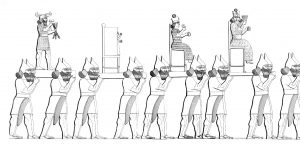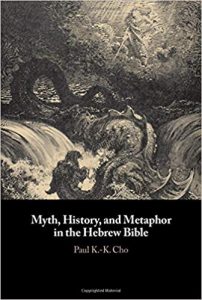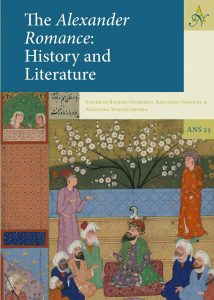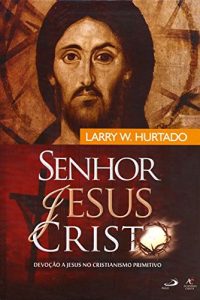Amazônia vira maior revés da imagem do Brasil em 50 anos, dizem diplomatas
Jamil Chade
Com protestos previstos para está sexta-feira pelo mundo, Itamaraty confirma que embaixadas brasileiras já reforçaram sua segurança. Ao colocar Amazônia no G7, Macron alerta que não vai dar seu apoio ao acordo Mercosul-UE e manda mensagem de que Bolsonaro não tem capacidade de lidar, sozinho, com a crise. “Jamais tivemos nos últimos 50 anos um desastre de imagem tão catastrófico e irreparável como esse”, afirmou ex-ministro Rubens Ricupero.
GENEBRA – A fumaça das queimadas na Amazônia já sufocou o governo Jair Bolsonaro, pelo menos em sua imagem no exterior. No plano internacional, observadores apontam que a crise já poderia ser considerada como o maior revés do Brasil no cenário externo em meio século. Em apenas sete dias, mais de 10 milhões de tuítes foram publicados sobre a crise no país.
O acordo de comércio entre Mercosul e UE também está ameaçado, depois que França e Irlanda anunciaram nesta sexta-feira que vão se opor ao tratado diante da postura brasileira no clima. Até mesmo um pedido de sanções contra o País foi lançado no Reino Unido, enquanto proliferam pedidos da sociedade civil para que governos se distanciem de Bolsonaro.
Emmanuel Macron, que recebe os líderes do G-7 neste fim de semana, decidiu colocar a Amazônia em sua agenda e chamou o tema de “crise internacional”. No fundo, a manobra é vista como tendo o potencial de criar uma pressão internacional sobre o Brasil em termos ambientais.
O UOL apurou que a França, antes de fazer a sugestão, já havia estabelecido um entendimento de que teria o apoio da Alemanha e da chanceler Angela Merkel, ridicularizada por Bolsonaro. A alemã suspendeu sua colaboração para o Fundo Amazônia e, como resposta, recebeu do presidente brasileiro a sugestão de usar o dinheiro para reflorestar a Alemanha.
O cenário desenhado é de que, ao tratar da crise, Macron estipule que Bolsonaro, sozinho, não tem como lidar com a situação da Amazônia.
Nesta sexta-feira, Merkel já saiu em apoio à proposta francesa e declarou a situação no Brasil como sendo uma “emergência aguda”.
Em Bruxelas, a Comissão Europeia afirmou estar “profundamente preocupada” com a situação e disse que está disposta a ajudar o Brasil. A UE ainda apoiou a ideia de Macron de tratar da crise durante a reunião do G7.
Em Dublin e Paris, os governos já deixam claro que poderão simplesmente vetar o acordo com o Mercosul, assinado há poucas semanas, abrindo uma crise na relação entre a Europa e o Brasil.
Macron ganhou ainda o sinal verde de Justin Trudeau, primeiro-ministro do Canadá e que também estará no G7.
Além da pressão, os governos poderiam lançar um apelo para que o Brasil se comprometa a retomar iniciativas como o Fundo Amazônia ou simplesmente aceitar recursos estrangeiros. Em qualquer um dos casos, isso significaria um monitoramento estrangeiro do que ocorre no Brasil e uma tentativa de blindar o desmonte da política ambiental do País.
Brasil sem voz no G7 só contaria com Trump
Não por acaso, a iniciativa deixou parte do governo enfurecido, diante do risco de que decisões sejam tomadas no fim de semana sem sequer consultar o Brasil. Um dos negociadores que estará na reunião acredita que, ainda mais prejudicial, será o fato de o país não poder se defender diante de um grupo que conta com Macron e Merkel.
Para os funcionários da chancelaria francesa, a dúvida é se Donald Trump sairá ao resgate de seu novo aliado, Jair Bolsonaro. Entre diplomatas brasileiros, a percepção é de que, mesmo que a Casa Branca monte uma blindagem para o Brasil, ela não o fará sem um custo. “Nada é feito nos EUA sem uma contrapartida”, admitiu um diplomata.
O ex-ministro do Meio Ambiente e embaixador Rubens Ricupero foi contundente. “No dia 21 de agosto, percorri todos os principais noticiários da televisão mundial: RAI 1, France 2, BBC, CNN. Todos, até na seção de previsão de tempo, dedicavam atenção principal às queimadas na Amazônia”, disse à reportagem.
“Jamais tivemos nos últimos 50 anos um desastre de imagem tão catastrófico e irreparável como esse”, afirmou o embaixador. “É muitas vezes pior em intensidade, horário nobre, repercussão junto a estadistas e gente do povo do que sucedeu nos piores momentos do regime militar”, alertou.
Segundo Ricupero, está sendo destruído “em poucas horas um esforço que se iniciou na época de Sarney e demandou mais de 30 anos e enormes esforços e recursos”.
“Houve dois momentos em que o Brasil começava a recuperar um pouco sua imagem. O primeiro foi quando Sarney ofereceu o Rio de Janeiro para sediar a maior conferência do clima de todos os tempos, a Rio 92 e Collor honrou o compromisso, um momento alto da diplomacia ambiental brasileira”, argumentou.
“O segundo foi mais recente, a partir do ano em que a taxa de desmatamento principiou a cair e assim permaneceu durante alguns anos. Mesmo assim, a imagem geral, aquela que ficava lá no fundo da mente das pessoas, é que o Brasil era um país agressor do meio ambiente, uma vez que, mesmo nos bons momentos, não faltavam episódios lamentáveis de invasão de terras de índios por garimpeiros, assassinatos de líderes ambientais como o de Chico Mendes e atentados de todo tipo. Agora, o que está ocorrendo pôs tudo a perder”, alertou.
“Desmantelamento”
Ele, porém, não vê uma saída clara. “A situação desta vez é mais grave. Nos governos anteriores, existia uma vontade sincera, mais ou menos eficaz de tentar controlar a destruição. Infelizmente, mesmo os ministros e governos melhor intencionados lutavam em posição desfavorável, uma vez que os empenhados na destruição -grileiros, madeireiros, garimpeiros, fazendeiros pecuaristas – se encontravam presentes em toda a região amazônica, ao contrário do governo, cuja presença era débil e precária”, disse.
“Às vezes, reservas maiores que um país europeu tinham apenas dois funcionários na vigilância! Faltava tudo: aviões, helicópteros, equipamento moderno de comunicação, viaturas. O pouco que se obteve foi graças a doações como as do Fundo Amazônia, que o atual desgoverno está em vias de liquidar”, afirmou.
Para Ricupero, Bolsonaro e seu “antiministro do Meio Ambiente estão consciente e deliberadamente empenhados em destroçar todas as instituições e mecanismos de fiscalização e controle”.
“Desde o começo, o governo intimidou os fiscais, desmoralizou a fiscalização ao denunciar o que chamou de “indústria das multas”, quando é mais do que sabido que mais de 90% das multas nunca são pagas. Em seguida, afastou os funcionários de carreira e nomeou para dirigir o IBAMA e o Instituto Chico Mendes oficias da PM de São Paulo que prosseguiram o trabalho do desmantelamento”, alertou.
Para ele, é falsa a percepção de que Bolsonaro “peca apenas pela língua, pelas suas desastrosas declarações”. “Na verdade, o governo federal a rigor nem precisa fazer nada de especial para que o desmatamento aumente. Basta cruzar os braços, já que os destruidores estão apenas esperando o sinal verde para agir. Sinal que este governo vem fornecendo a cada dia, a cada hora, por meio da impunidade”, disse.
“O que está ocorrendo lembra um episódio sinistro de nossa história: o fim do tráfico de escravos. Foi preciso que a esquadra inglesa começasse a capturar navios tumbeiros dentro de águas territoriais brasileiras e até dentro de nossos portos para que finalmente o governo imperial se decidisse em 1850 a colocar fim ao tráfico. Por que do contrário, os ingleses o fariam. É isso que deseja Bolsonaro?”, questionou.
Na ONU
A percepção de Ricupero ecoa dentro da ONU, onde o Brasil vê sua reputação afetada. Dois embaixadores que pedem para não ser identificados confirmam que, em décadas, jamais viram uma reação internacional contra o Brasil de tal magnitude. “Não me lembro da última vez que o Brasil passou a ser tratado como um pária, como está sendo hoje”, admitiu um deles.
O caso foi considerado como sendo de tal gravidade que António Guterres, secretário-geral das Nações Unidas, saiu de seu tradicional silêncio em temas polêmicos para pedir que a Amazônia seja protegida. “Estou profundamente preocupado pelo fogo na floresta amazônica”, escreveu, alertando que o mundo não poderia se dar ao luxo de perder tal “fonte de oxigênio”.
A Organização Mundial da Saúde (OMS) também se pronunciou, alertando que os acontecimentos no Brasil revelam o risco que enfrenta o planeta.
Fontes na entidade apontam que a crise não se limitará aos assuntos ambientais. Para diplomatas, a capacidade de o Brasil liderar esforços ou campanhas em outras áreas deve ser afetada. “O Brasil é hoje meio tóxico e são poucos os que estão dispostos a embarcar em algum projeto com o país”, disse um experiente negociador.
Pela Europa, parlamentares que terão de votar uma ratificação do acordo comercial com o Mercosul estão sendo pressionados por seus eleitores a não chancelar o tratado com o Brasil. Numa rua de uma cidade austríaca, nesta semana, jovens simularam um enforcamento. Enquanto o gelo aos seus pés derretia, seguravam um cartaz contra o Mercosul e Bolsonaro.
Diplomatas que conversaram com a reportagem do UOL admitiram que as imagens enfraquecem o governo brasileiro e ameaçam até mesmo ser traduzidas em perdas reais para as exportações.
Com os partidos ambientalistas ganhando força pela Europa, deputados sabem que precisam dar uma roupagem “climática” para seus discursos. O resultado, com um Brasil debilitado, pode ser a transformação de Bolsonaro numa espécie de “bola da vez” para que políticos locais mostrem que estão comprometidos com o meio ambiente.
Sanções
No Reino Unido, uma petição foi lançada ao Parlamento Britânico solicitando que o governo faça pressão para que sanções sejam impostas contra o Brasil, por conta da floresta. Até a manhã de sexta-feira (horário europeu) e em poucas horas, a petição já contava com 40 mil assinaturas.
Não faltaram ainda aqueles que, se aproveitando de um clima deteriorado para o Brasil, embarquem numa nova campanha para minar as exportações brasileiras e evitar a concorrência.
Na Noruega, que negocia um acordo de livre comércio com o Mercosul, a Associação dos Produtores Agrícolas alertou ao governo de Oslo que os consumidores noruegueses precisavam ser respeitados e que um acordo com o Brasil não deveria ser fechado.
Para eles, um norueguês deve poder comer uma carne “sem ter de ter a consciência pesada” por estar desmatando a Amazônia. Mas sua real preocupação era outra: a capacidade dos produtos agrícolas do Brasil de minar a rentabilidade de seus próprios agricultores.
Na França, entidades de agricultores que sempre foram contra um acordo com o Mercosul agora adotaram o lema ambientalista para justificar seu pedido por barreiras.
De fato, em Brasília, o governo oficialmente instruiu seus diplomatas a defender a soberania do país sobre a Amazônia e a colocar em questão as reais intenções de ONGs. O discurso ainda inclui uma tentativa de qualificar os ataques contra o Brasil como uma espécie de estratégia de protecionismo comercial.
Mas, entre uma parcela menos radical do governo, o temor é de que não apenas as chamas na floresta saíram do controle. Com uma ampla campanha internacional, a percepção é de que a imagem do País queima junto com sua floresta. E os prejuízos podem ser enormes, politicamente e em termos comerciais.
Segurança reforçada
No centro do mundo e na periferia do Brasil, a realidade é que a floresta conseguiu unir artistas, políticos de diferentes partidos e, acima de tudo, a opinião pública contra o chefe de estado brasileiro.
Para esta sexta-feira, protestos estão sendo organizados diante de embaixadas do Brasil pelo mundo, enquanto nos bastidores do Itamaraty muitos temem depredações e ações mais contundentes. Desde o início do governo, foram pelo menos quatro incidentes e quase todos com recados sobre a situação ambiental do país.
Ao UOL, o Itamaraty confirmou que “os postos no exterior já adotaram medidas de reforço de segurança, conforme avaliação da necessidade local”.
Grupos de estudantes querem usar o dia de protestos, nesta sexta-feira, para também dedicar uma mensagem especial ao presidente brasileiro. Nesta semana, personalidades como Leonardo DiCaprio e Greta Thunberg usaram as redes sociais para denunciar a destruição da floresta, levando críticas a Bolsonaro a milhões de seguidores.
Em diversos países europeus, o assunto se transformou em um dos “trending topics” das redes sociais, obrigando até mesmo membros do governo a postar mensagens em inglês.
Dentro da ONU, um antigo chefe de negociações de desarmamento comentava, ao ver estampada as imagens da Amazônia em chamas na imprensa de todo o mundo, na prateleira de uma banca de jornais dentro das Nações Unidas.
“Bom, quem até agora não conhecia Bolsonaro, agora sabe quem é: aquele que está permitindo a destruição da floresta”, completou.
Fonte: Jamil Chade – 23/08/2019
 Entre 2003 e 2011 publiquei na Ayrton’s Biblical Page várias enquetes bíblicas. Dezenas. Assuntos que estavam sendo debatidos no meio acadêmico, nos biblioblogs, na mídia, nas iniciativas das comunidades eclesiais, nas aulas com os estudantes de Teologia.
Entre 2003 e 2011 publiquei na Ayrton’s Biblical Page várias enquetes bíblicas. Dezenas. Assuntos que estavam sendo debatidos no meio acadêmico, nos biblioblogs, na mídia, nas iniciativas das comunidades eclesiais, nas aulas com os estudantes de Teologia.





